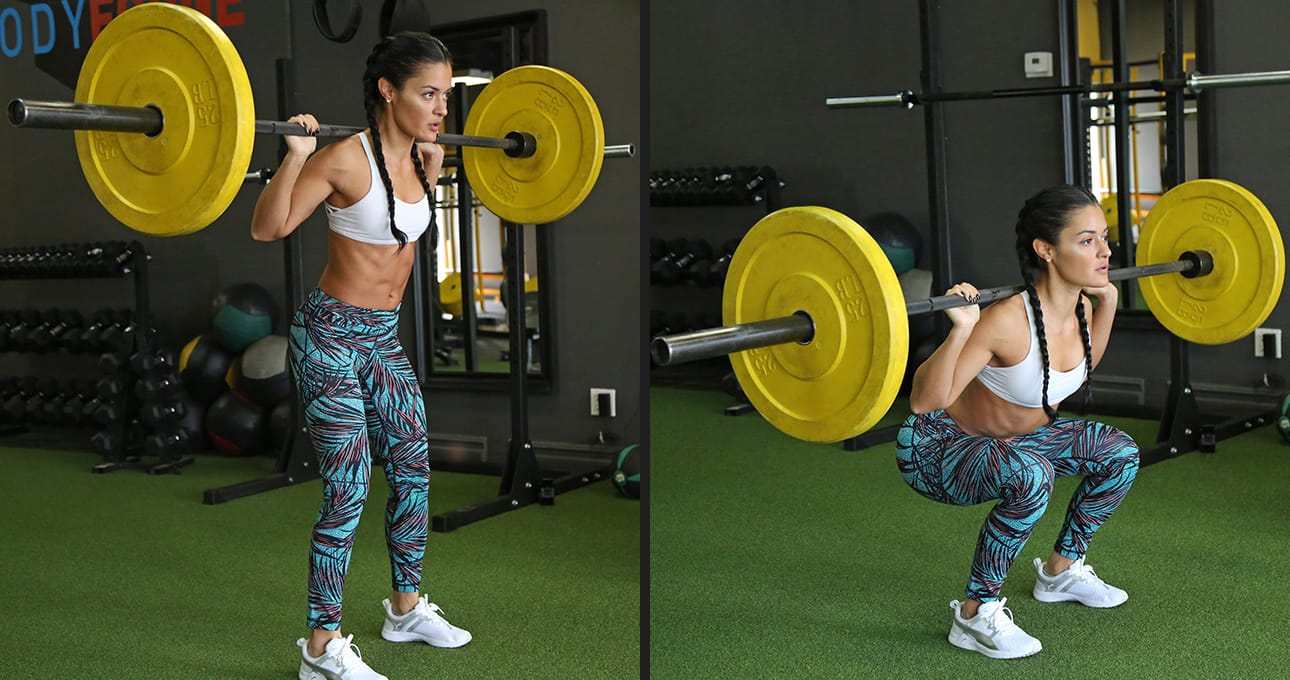No Products in the Cart


There are many coaches out there, some of whom allow clients to attempt and continue to perform movements with poor form or dangerous imbalances. Make sure you look for qualified coaches who are certified in the proper field on your interest. While I hate seeing bad form happen, approaching someone and saying, Hey, you could use some regressed moves because you shouldn’t be doing this movement just won’t go over well. Even with better or worse ways to say it, no one likes the resident know-it-all at the gym. I write this instead, in hopes some of you can share it with your lifting partner and be on the lookout, because friends don’t let friends lift above their means. Don’t look up squatting techniques on some random website and assume you are going to do it right.
Here are the Five Ways Your Squat is Messed Up (and how to fix it):
The toes are an indication of where the load is traveling, and you may need to loosen up your hips with some stretching. Your knee joint health depends on proper alignment with your toes. To fix this problem: shift your weight back towards your heels; try to push through with your heels rather than push with the front of your foot. This will help you sit back more and put your knees into the proper position. If you are still having issues sitting back, you can use a form of corrective training called Reactive Neuromuscular Training (RNT). The premise of RNT is that if you exaggerate the mistake the body is producing, the body will exert a signal to create a force in order to fix it. So in this case, one thing you can do is slide a plate or two underneath your heels. The plates should be high enough to require that you put most of your weight onto them. Keep in mind, you will still need to mentally sit your butt back. Another way to use RNT here is to place a band around your knees, having it pull you forward from the back of your knees.
Two types of knee issues contraindicate performing squats: Valgus deviation and Varus deviation. A Varus knee is one that bulges outward; Valgus knees come inward towards each other. If your knees tend toward either of these, you should not be squatting. Although I will recommend some RNT methods to correct them, I HIGHLY suggest seeking the help of a physical therapist in person who can help analyze and treat the issue. In order to fix either of these issues, we would use RNT to exaggerate the mistake. If you have a valgus deviation, you can wrap a resistance band around your knees while squatting with a lighter load; you can also wrap the band around the affected knee (placed just above the knee and not on the actual knee joint) with the other end around a stable pole, then perform reverse lunges (see photos below). Make sure the band is pulling the knee medially (towards the midline of the body). You can utilize the latter method with a Varus deviation as well. Simply put your Varus knee in the front during a reverse lunge or squat, and have the band pull the knee outward while attached to a pole. You can also have someone hold the band in both instances.
When performing your squat, your butt should be lower than your knees. Going as low as you can allows your back to stay upright. But a few things can cause you to buckle under. First, if you’re using a high bar, keep your chest tall, rather than allowing it to fall down towards the floor while you push the weight up. Second, a lack of core strength can compromise your squat. A strong core is built from moves like planks, hyperextensions, and obliques. A good squat is born from a strong, stable core. Third, failing to utilize proper core mechanics, in particular breathing, can lead to problems. Inhale before you begin; hold your breath over the entire squat, and slowly exhale after you complete your stand. Doing so increases the pressure in your abdomen; this is known as the Valsalva maneuver, and it helps with your stability. If you release your breath at the bottom or in the middle of your squat, you create a potentially dangerous pressure change in your body. To correct this, hit the planks and hold your breath!
Unless you are injured / rehabbing, don’t do half-reps in a squat. If you can’t complete a whole squat, you have piled on too much weight, plain and simple. The squat is a complex movement, not just for its difficulty but for its multi-muscle involvement. Treat it with the respect it deserves and do the whole motion; otherwise, you will not be getting the complete benefit.
Lateral hip shift occurs when one side of your hip shoots out to the side as you squat down. This is due to a muscular imbalance that stems from the hips to the core, and it could cause a serious injury. In my experience, the best way to fix this is, once again, RNT. In this case, have a coach or training partner place a band around your hips, pulling the band laterally towards him or herself to provide you extra stability . They should be standing on the same side as your affected hip. Although you may not have known squat before reading this, you know a little bit more about squat now. After you continue to read up about squat and understand the mechanics of it, perhaps one day you can say you know squat. I know squat, but I am always learning squat. The first step to having a good squat is admitting you don’t know SQUAT.
Someone purchsed a